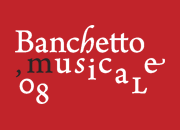October 4, Saturday, 2.30 pm
Franciscan Monastery Church, Trakø g. 9/1
Incessament mon povre cueur lamente
.
ENSEMBLE AMARCORD Germany
- Wolfram Lattke - tenor
- Martin Lattke - tenor
- Frank Ozimek - bariton
- Daniel Knauft - bass
- Holger Krause - bass
The core of the programme is the chanson Incessament mon povre cueur lamente by Pierre
de La Rue (c1452–1518), a Franco-Flemish composer of the Renaissance, and a parody mass,
modelled on this chanson. An outstanding tenor singer, Pierre de La Rue worked at the Habsburg
Court in Flanders, namely at the chapel choir of Philip the Handsome, in s'-Hertogenbosch. He also
worked for Philippe's son Charles, who later was crowned Holy Roman Emperor, Charles V. Pierre de
La Rue was beloved by Philippe's sister Marguerite of Austria, and having reached a certain age,
surpassed the fame of his contemporary composer Josquin des Prez. The parallel between the two
composers is intentional, since for a long time researchers attributed the chanson Incessament
to Josquin des Prez, and only recently it has been acknowledged as an authentic Pierre de La Rue‘s
work. The chanson served as a model for the parody mass (the ordinaries Kyrie, Gloria,
Credo, Sanctus and Agnus Dei). It is interesting to note that the mass not
only draws on the melody as cantus firmus, but also incorporates the polyphonic part of the
chanson into its musical structure. One of the most characteristic features of de La Rues’s works is
his penchant for writing in canon, where Bassus Primus follows Bassus Secundus, at
the upper 4th and at the distance of two measures. However, it is just a small detail of de La Rue's
contrapunctal mastery that brought him fame. Unfortunately, the Council of Trent (1545–1563) forbade the
use of secular elements in sacred music, which to a certain extent restricted composers‘ creativity.
In order to reconstruct the whole mass, the ensemble has included the propers in Gregorian chant
(Proprium missae), presumably taken from the Moosburg gradual. This manuscript, dating back to
the end of the 14th century is full of striking deviations from its official Roman counterpart,
Graduale Romanum, yet such discrepancies are typical of the 15th–16th century pre-reformational
Germany.
The concert will start with the motet Sic Deus dilexit, which brings the listener to Central
Germany. This contrafactum of Incessament has presumably reached us from Torgau manuscripts,
thanks to Johann Walther. It is probably through him that Martin Luther got acquainted with Pierre de
La Rue’s works, and became a keen admirer of the great Franco-Flemish composer.
The Ensemble Amarcord focuses on medieval, Renaissance and contemporary music and
collaborates with such composers as Bernd Franke, Ivan Moody, Marcus Ludwig. However, the ensemble
repertoire contains a variety of different programmes covering all facets of vocal music, ranging from
madrigals to romantic compositions and a cappella arrangements of well-known songs.
The young singers have found a powerful impetus in the master classes given by the Hilliard Ensemble
and the King's Singers. The group has won several international competitions, such as the German Music
Competition for Chamber Music in Bonn (2002), the 1st Choir Olympiad in Linz, as well as competitions
in Tolosa, Tampere and Pohlheim.
Alongside the Gewandhaus Orchestra and St. Thomas Boys Choir, Ensemble Amarcord is one of Leipzig’s
main musical representatives both in Germany and abroad. In addition, the ensemble has also made its
mark by establishing and organising “A cappella”, the Leipzig festival of vocal music. In a move
somewhat out of the ordinary, the quintet successfully took part in performances of two Leipzig-based
theatre productions, combining dance with a cappella singing.
The CDs of the ensemble are released on the Apollon Classics label.

